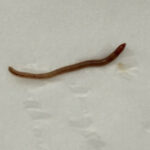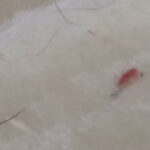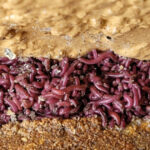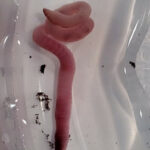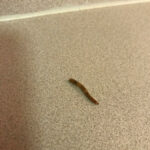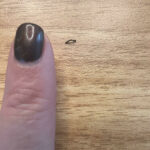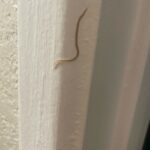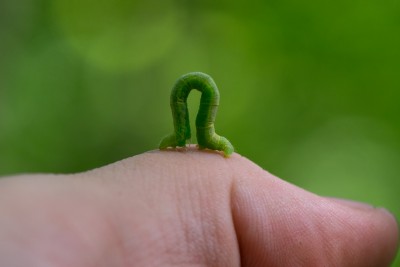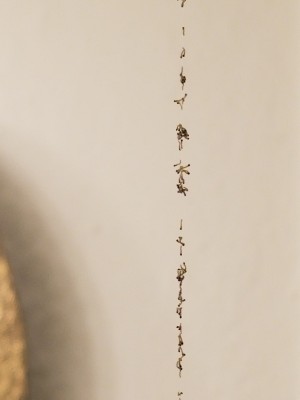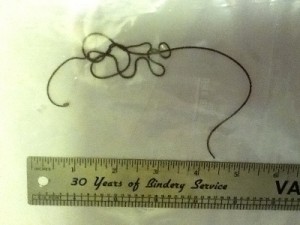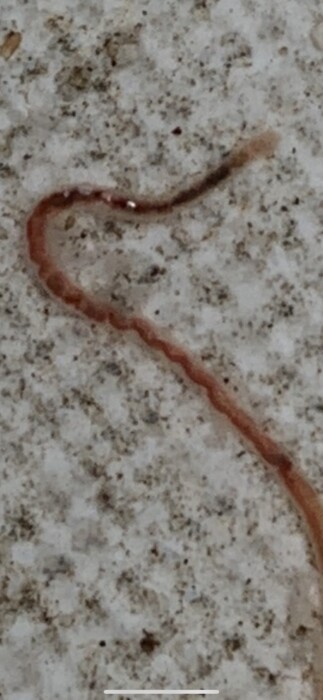
“I found these worms under my plant pots in the balcony garden”, writes this reader in his submission regarding the clear worm with red entrails pictured below. “They are hair-thin and they move in water at a good speed with snake-like movement. When I took a picture and zoomed in I found they have dots at one end of the body — the tail end I would assume. They look really frail, thread-like alarmist hair like. Three-to-five centimeters (1.2-2-inches) long and there’s quite a few of them in wet places under plant pots, fallen leaf debris, etc, after two days of rain. I wanna know if these are parasitic. And how to kill these without killing my plants. I’m from Maldives.”
We think our reader has found sludge worms. Also known as tubifex worms, tubificid worms, and sewage worms, sludge worms are a type of bloodworm that feeds on bacteria and decomposing organic materials in sediment. A bloodworm is any worm that is red due to high levels of a hemoglobin-like protein that allows them to survive for long periods of time in low-oxygen conditions. Because of this ability, they are typically found in marine environments (or at least near water), even though they are not technically marine worms. Sludge worms are often found at sewage grates, near puddles, and have even been known to show up in people’s toilets. They are not parasitic, nor are they a threat to human health in any way, so our reader needs not worry about that.
It is interesting that our reader only found the one worm, as sludge worms are known for their tendency to pile on top of each other to create one big, writhing mass of worms. These piles can often give people quite the fright, as from a distance it will look like a bloody lump of meat, or a brain! That said, they can definitely also be found on their own. They really only clump together when they feel threatened by something, be it another organism or sudden changes in their environment. What is really strange is that these were found under our reader’s plant pots. Sludge worms do not have much business hiding under plant pots, and we are thinking it is possible they ended up here accidentally, washing up with the rain. What we recommend doing is scooping these worms onto a dustpan and moving them to an area that is better suited to them: near a big puddle, pond, or lake would be perfect, if that is possible. If not, just moving them to some grass will do just fine too. Despite their frail appearance, sludge worms are quite resilient. If our reader keeps finding more tubifex worms around his plant pots, it might be a sign that the water quality in the pots is poor and it might be time to replant.
To conclude, we think our reader found sludge worms under his plant pots. They likely ended up there after the two days of rain and they are nothing to be worried about. We hope this helps, and we wish our reader the very best.
All About Worms is always free, always reader-supported. Your tips via CashApp, Venmo, or Paypal are appreciated! Receipts will come from ISIPP Publishing.
You might also find these guys interesting!






